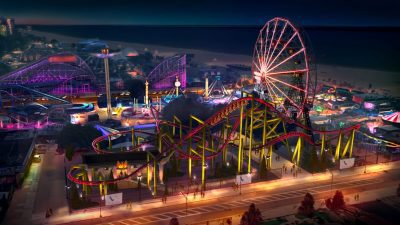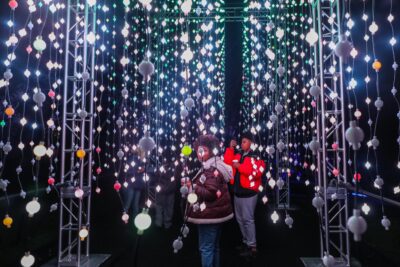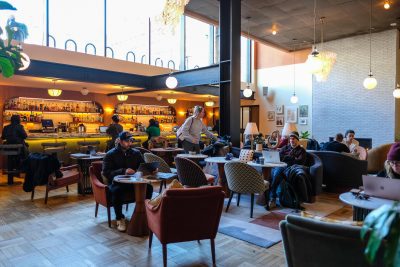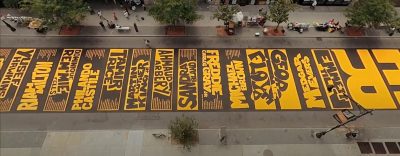A Look At The Bite Of Mikkel Carl’s Upcoming M23 Exhibit
With a background in philosophy and a proclivity for the readymade, Mikkel Carl’s work epitomizes a transgenerational approach to the media. Much like the the originators of this type of found object work in Dada- and surrounding isms, Carl’s work comes with a strong message and intention of provoking thought in his viewers. Often described as having a certain grammar or syntax to it, his work consistently has a message to share with his audience. Through his installations, Carl elicits strong responses from his audience with the found objects central to his style. He engages with and provokes consideration, offering up a playful yet poignant point of view on current events and social trends. While many of Carl’s contemporaries approach these subjects by creating immersive events through installation meant to take over the viewer’s experience, he brings a refreshing element of contemplation. A social media fanatic like the rest of the artworld, Carl recognizes the need to hop off the Instagram feed and reflect from time to time to gain a full appreciation of the works on display and what they have to say. And while his work speaks volumes to the ‘grammer in all of us, it also provokes something more than a multi-slide post can convey.
For his upcoming show Terrified of Society and Its Unclean Bite at M23 opening this Friday, May 11th, Carl has produced several pieces for the gallery’s two locations. The site-specific main piece, along with various smaller works included in the show act as a mirror for current events in the United States that are causing ripples globally. This collection of work epitomize both his reflective style and the power of unconventional materials as a means of social commentary.
Over the last decade, you have had work shown all over the globe. How has your style and process evolved?
I don’t have a style per se, which at least up until quite recently, has been a significant issue seen from a more commercial point of view. People, myself included, tend to like what they already know; the thrill of recognizing a work by this or that artist, passing judgment on how it differs slightly from previous ones. That said, all along I have been somewhat confident, that at some point my body of work would be big enough for patterns of recognition to start appearing. A good example is the mirror foil ”paintings” [that are] part of the M23 show.
In general, it seems I have a thing for metal, both real and various décor imitations. I have made colorful paintings by electrically charging titanium sheets, and I have soaked aluminum panels in car battery acid for months, generating figurations from crystalline white corrosion. And more recently I produced a metal plate á la Richard Serra from 7 wooden panels hand-polished with graphite powder and lacquer, and “welded” tight with a hot glue gun… I do know how to weld though.
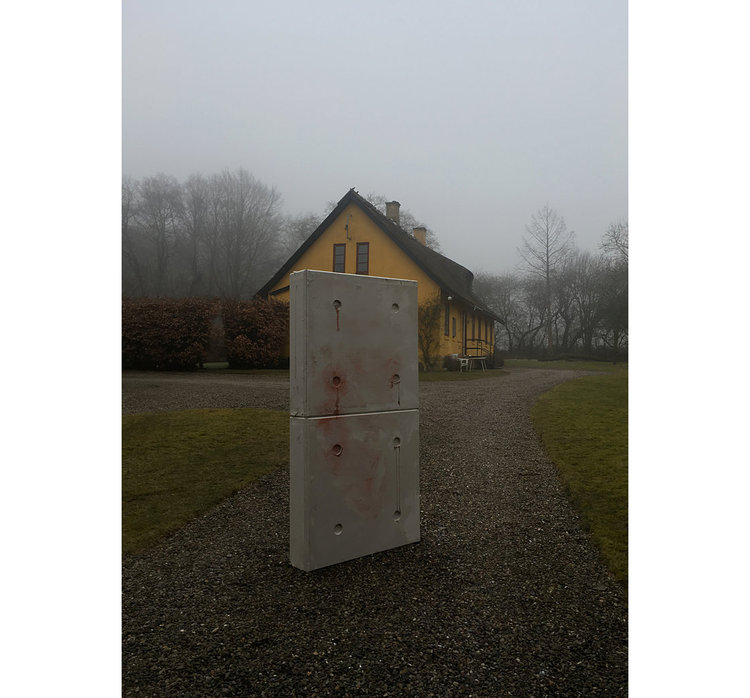
Was there a specific moment or object of inspiration for the works in your upcoming exhibit at M23?
The aforementioned faux steel plate was placed upright so that it cut the space where it was exhibited at the Danish gallery Last Resort in two, forcing the visitor to take the long way around so that they would have to decide if they would like to see the rest of the show, or enter the office in the back. So that work is definitely a departure point for what I’m doing here at M23.
But in the grand scheme of things: I was on a residency in New York in 2016, and along with 9/11 and the fall of the Berlin Wall, which happened when I was in 6th grade, the election of Trump as president of The United States is the most significant singular event post-WWII. Heading back to Denmark to do a commissioned work for a museum boardroom, I was prompted to make the installation Bad Moon Rising (2017) – a large meteorite hovering above the conference table.
How do the works in this exhibit relate to one another, and to your larger body of work?
One thing the reinforced concrete wall and the chrome-plated metal sheets from the M23 show have in common is that they are not what they seem. Every sign of wear on the surface is really an elaborate subjective gesture made to look objective: a representation of functionality. And on an even more basic level, all the mirroring works will, of course, engage directly with each other, reflecting the viewer in the space including the other mirroring working reflecting the viewer in the space ad infinitum.
Tell me more about your process for these specific pieces – where did the initial concept come from, and what did the road to the physical objects we will be seeing in the gallery next week look like?
The mirror works are called Untitled (You Hate the Fact that You Bought the Dream and They Sold You One). They are a “commercialized” version of an eponymous public work I recently did: I put self-adhesive mirror foil on 15 poster stands in a railway station, so instead of regular advertisements, commuters would see themselves (somewhat distorted) hurrying to or from the train.
More specifically, I arrived at the use of mirror foil doing a solo presentation with M23 at Code Art Fair in Copenhagen last August. Here I presented Whose Who Are Awake Have a World in Common, While Each Person Asleep Has a World of His Own (2016), which included three lightweight copies of the official art fair walls lifting off the ground with paintings and all.
Those works were made spraying aerosol metallic paint into puddles of water, which due to the surface tension will stay in place on top of the stretched fabric. With a heat gun I direct the mixture of water and paint around, and once the composition is more or less as I want it, I remove the water with a pipette fixating the paint. But to complicate matters a little, I afterward mount the translucent, cotton fabric on top of reflective mirror foil, which will “reverse” the image. The matte black fabric, which seen from the side is merely a representation of depth, becomes reflective once the viewer steps directly in front of the painting and will now mirror the contours of real space.
Both series are in line with my general occupation with painting. That is painting without paint and with no immediately identifiable subjective gestures or preoccupation with formal structures. In the case of Untitled (You Hate the Fact that You Bought the Dream and They Sold You One) scratching the surface, and other types of “accidental” mark making are my way of composing images. But I guess, since the motive of the paintings is, in fact, the reflection of the viewer and surrounding space – hindered by attention to distorting surface details – they still very much deal with the all-time classic painterly question of figure and ground.
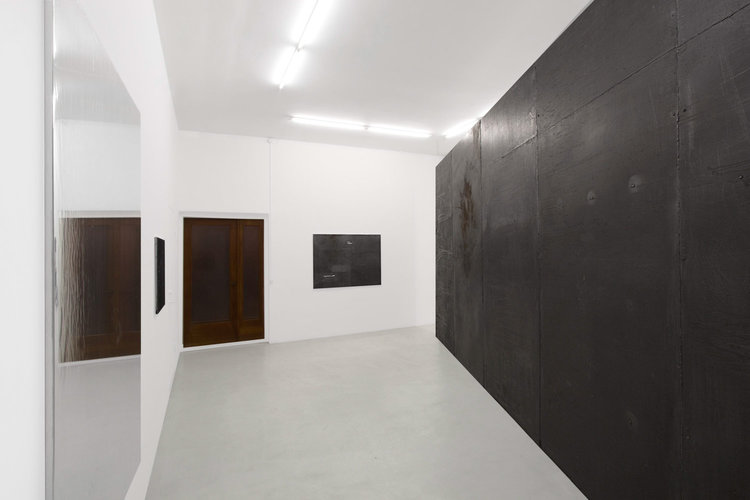

Your work is often described as having a method of “associative grammar.” Can you elaborate on this?
In my first year studying philosophy, I read both Ursprung des Kunstwerkes by Martin Heidegger and T. W. Adorno’s Ästhetische Theorie, both dealing with the metaphysical and socio-political aspects of art. Popular at the time was also a notion of “aesthetic experience” not being limited to artworks per se but rather used in the attempt to conceptualize a general aesthetic dimension by drawing heavily on romantic philosophy and literary theory. Personally, I used to find all of this a little too romantic, but then I started reading and writing about the readymade strategy combining it with my interest in post-structuralism. My main concern was to trace a common productive force that cannot be conceptualized in and by itself, but only retroactively through the differences between the entities it has already created. The point is that it is not the things in themselves but the differentiating “principle” that is in a way original.
Can you speak more to your use of found objects, or readymades? When did this become an important element of your work, and how do you see it within the larger tradition of the readymade?
Most often the avant-garde has been identified with the Hegelian ideal of overcoming the distinction between art and life. Most famous is Peter Bürger’s Kritik der Avantgarde, in which he describes the neo-avant-garde of the fifties and sixties as merely the institutionalized version of the historical avant-garde thus making it clear how unsuccessful its attempt to repeal the ontology of the artwork was.
Personally, I regard this outspoken ambition as more of a rhetorical tool trying to create a movement towards something new. After all, the ready-made was and still is a far more realistic way for art and life to come together.
Inspired by Freud’s concept of ‘Nachträglichkeit,’ meaning ‘postponement’ or ‘delay,’ as well as the notion of ‘différance’ – a trace left without an original – Hal Foster claims that the past never ends. Whatever happens, will keep affecting what once happened. Had the neo avant-garde not taken up the strategies from Dada, Constructivism, Futurism, and Surrealism, there would never have been a historical avant-garde. It was the repetition that created the original.
Your work is typically hyper-conscious of and related to its environment. How do you think these particular gallery spaces influences and enhances these pieces?
On my first day here, I went to have a look at the ancillary space M23 just took over on 120 Waterbury, and the gallerist Todd Mauritz went on about how this was going to be spray painted white and how that should be covered with drywall, and I was like ‘Please, don’t!’ The location has so much character, the back wall looking more or less exactly like the “New York loft” faux brick wall wallpaper I recently used in another exhibition.
At some point, people ought to get tired of the generic and immediately Instagramable white cubes where there is no scale or sign of human activity. And concerning my paintings, the more stimulating the environment is, the more interesting the mirroring works will obviously look. It isn’t much fun contemplating the reflection of a white wall.
When it comes to the more pristine space on Morgan Avenue, I guess it was the height of the ceiling and its beautiful wooden construction including a small skylight window that prompted me to do something that would make people look up. And also something that would turn this tranquil sanctuary for the arts into more of a claustrophobic prison cell. You know, luxury condos made from reinforced concrete are shooting up everywhere.
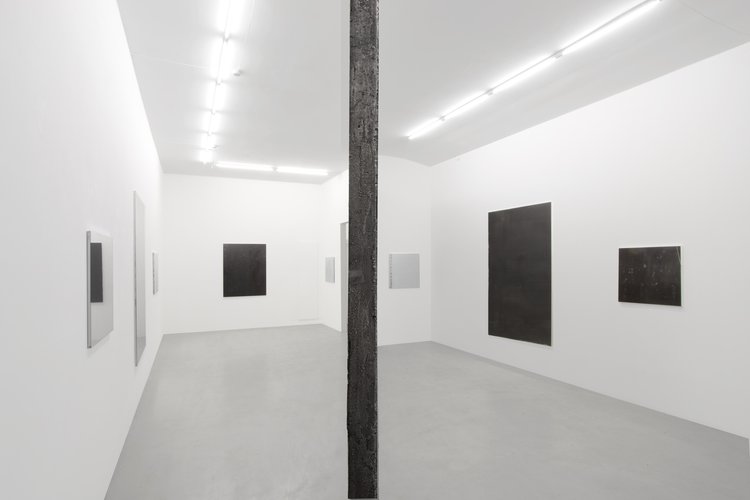

What would you want a first-time viewer of your work to know about you personally?
I don’t know. Perhaps that for two months straight, I have stayed away from posting on social media, which is a huge thing for me. As it turned out, I spent way too much time and energy worrying what other people think of my work.
The pieces in your upcoming M23 exhibit have been described as referencing the idea of a faux monument. What are you hoping to memorialize here, and how do you think your work accomplishes that?
Bushwick is in a state of radical flux, and I guess if someone doesn’t do something in ten years time it will resemble Williamsburg. Another thing that struck me being here in New York on a residency in 2014 when the economy was better and then again in 2016 is how large a percentage of all shows that are nowadays straight up painting shows. In the midst of this chopping sea, M23 has dedicated itself to installation art. I think that endeavor alone is worth trying to commemorate.
What do you hope those visiting the exhibition will walk away understanding better, or differently?
As I was saying to this very nice guy I met the other night standing on a rooftop terrace overlooking the Guggenheim: Art, in general, provides people with a sense of what things could be like, if only they were different. The meaning of artwork – even, or perhaps especially, if they are ready-mades – is ordered in a way that is structurally different from everything else. It’s kind of like how words in a poem function substantially different from when we use them in a regular conversation. You may lament art being a luxury commodity or celebrate l’art pour l’art from way up in your ivory tower – or the opposite, but either way, I believe art will always be a matrix for change. If this or that object, this or that space, may be structurally ordered in a hitherto unknown fashion, then the whole world could at least in principle look different.
Mikkel Carl’s work will be on display at M23 from May 11th to June 17th.
You might also like 

















